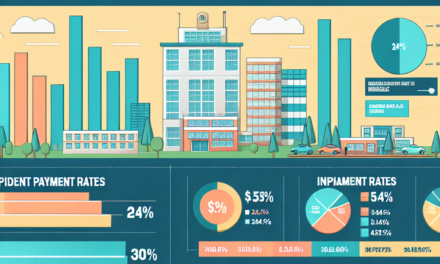FDA Job Cuts Disrupt Device Industry Operations
The medical device industry is a critical component of healthcare, providing innovative solutions that improve patient outcomes and enhance the quality of life. However, recent job cuts at the U.S. Food and Drug Administration (FDA) have raised concerns about the potential disruption to device industry operations. This article explores the implications of these job cuts, examining their impact on regulatory processes, innovation, industry compliance, and ultimately, patient safety. We will delve into five key areas: the role of the FDA in the device industry, the reasons behind the job cuts, the immediate effects on device approvals, the long-term consequences for innovation, and the potential impact on patient safety.
The Role of the FDA in the Device Industry
The FDA plays a pivotal role in ensuring the safety and efficacy of medical devices before they reach the market. This regulatory body is responsible for evaluating new devices, monitoring existing products, and enforcing compliance with federal regulations. The FDA’s responsibilities can be categorized into several key functions:
- Pre-Market Approval: The FDA reviews and approves new medical devices through a rigorous process that includes clinical trials and data analysis to ensure safety and effectiveness.
- Post-Market Surveillance: After devices are approved, the FDA continues to monitor their performance in the market, collecting data on adverse events and ensuring ongoing compliance with safety standards.
- Guidance and Regulation: The FDA provides guidance to manufacturers on regulatory requirements, helping them navigate the complex landscape of medical device development.
- Enforcement: The FDA has the authority to enforce compliance through inspections, warning letters, and, if necessary, product recalls.
- Public Health Initiatives: The FDA engages in public health initiatives to educate healthcare providers and patients about the safe use of medical devices.
Given these responsibilities, the FDA’s workforce is crucial for maintaining the integrity of the device industry. A well-staffed FDA can respond promptly to emerging technologies and potential safety issues, ensuring that patients have access to safe and effective medical devices.
Reasons Behind the Job Cuts
The recent job cuts at the FDA can be attributed to several factors, including budget constraints, shifts in policy priorities, and the need for organizational restructuring. Understanding these reasons is essential to grasp the broader implications for the device industry.
- Budget Constraints: The FDA operates within a federal budget that is subject to political negotiations. Recent budget cuts have forced the agency to reevaluate its staffing needs, leading to layoffs and hiring freezes.
- Policy Shifts: Changes in administration can lead to shifts in regulatory priorities. The current administration may prioritize different areas of public health, impacting the resources allocated to the device division.
- Organizational Restructuring: The FDA has undergone various restructuring efforts to improve efficiency. While intended to streamline operations, these changes can result in job losses and a reduction in workforce capacity.
- Increased Workload: The device industry is rapidly evolving, with new technologies emerging at an unprecedented pace. The FDA’s ability to keep up with this growth is hampered by workforce reductions.
- Impact of COVID-19: The pandemic has strained resources across the healthcare system, including the FDA. The agency has had to redirect staff to address urgent public health needs, further complicating its ability to manage device approvals.
These factors combined have created a challenging environment for the FDA, leading to significant job cuts that threaten to disrupt its operations and, by extension, the medical device industry.
Immediate Effects on Device Approvals
The immediate aftermath of the FDA job cuts has been felt most acutely in the device approval process. With fewer staff members available to review applications, the timeline for approvals has been significantly impacted. This delay can have several consequences for manufacturers and patients alike.
- Increased Approval Times: Manufacturers are experiencing longer wait times for device approvals, which can delay the introduction of innovative products to the market. For instance, a recent survey indicated that approval times for Class II devices have increased by an average of 30% since the job cuts were implemented.
- Backlog of Applications: The reduction in workforce has led to a backlog of applications awaiting review. This backlog not only frustrates manufacturers but also limits patient access to potentially life-saving devices.
- Impact on Small Manufacturers: Smaller companies, which often lack the resources to navigate lengthy approval processes, are particularly vulnerable. Delays can jeopardize their financial stability and hinder their ability to compete with larger firms.
- Increased Costs: As approval times lengthen, manufacturers may incur additional costs related to extended clinical trials or maintaining compliance with evolving regulations. These costs can ultimately be passed on to consumers.
- Market Uncertainty: The unpredictability of the approval process creates uncertainty in the market, making it difficult for manufacturers to plan product launches and investments in research and development.
These immediate effects underscore the critical need for a well-resourced FDA to ensure timely and efficient device approvals, which are essential for fostering innovation and meeting patient needs.
Long-Term Consequences for Innovation
The long-term consequences of FDA job cuts extend beyond immediate approval delays; they pose a significant threat to innovation within the medical device industry. A robust regulatory environment is essential for encouraging research and development, and any disruption can have lasting effects.
- Reduced Investment in R&D: Investors are less likely to fund new projects if they perceive regulatory hurdles as insurmountable. A slowdown in device approvals can lead to decreased investment in research and development, stifling innovation.
- Brain Drain: Job cuts at the FDA may lead to a loss of experienced personnel who possess valuable knowledge and expertise. This brain drain can hinder the agency’s ability to effectively evaluate new technologies and maintain high standards of safety and efficacy.
- Shift in Focus: Manufacturers may shift their focus away from developing groundbreaking technologies to more conservative projects that are easier to get approved. This shift can stifle creativity and limit the introduction of transformative devices.
- Global Competitiveness: As other countries continue to invest in their regulatory agencies and streamline approval processes, the U.S. may fall behind in attracting innovative companies. This could lead to a decline in the U.S. as a leader in medical device innovation.
- Impact on Collaboration: Collaboration between academia, industry, and regulatory bodies is essential for fostering innovation. Disruptions at the FDA can strain these relationships, making it more challenging to bring new ideas to fruition.
In summary, the long-term consequences of FDA job cuts threaten to undermine the very foundation of innovation within the medical device industry, potentially leading to a stagnation of new technologies that could benefit patients.
Potential Impact on Patient Safety
Perhaps the most concerning aspect of the FDA job cuts is their potential impact on patient safety. The FDA’s role in monitoring and regulating medical devices is crucial for ensuring that products are safe for public use. Any disruption in this oversight can have dire consequences.
- Increased Risk of Adverse Events: With fewer staff members to monitor devices post-approval, there is a heightened risk of adverse events going unnoticed. This can lead to serious health complications for patients using faulty or unsafe devices.
- Delayed Response to Safety Issues: The FDA’s ability to respond quickly to emerging safety concerns is compromised by workforce reductions. Delays in addressing issues can result in prolonged exposure to unsafe devices for patients.
- Challenges in Post-Market Surveillance: Effective post-market surveillance relies on a robust workforce to analyze data and identify trends. Job cuts can hinder the FDA’s ability to conduct thorough investigations into device performance.
- Public Trust Erosion: As patients become aware of potential delays and safety concerns, public trust in the FDA may erode. This loss of confidence can lead to hesitancy in using new medical devices, ultimately impacting patient care.
- Legal and Financial Repercussions: Manufacturers may face increased legal liability if devices are found to be unsafe due to inadequate oversight. This can lead to costly lawsuits and damage to their reputation.
The potential impact on patient safety is a critical concern that underscores the importance of a well-resourced FDA. Ensuring that patients have access to safe and effective medical devices should remain a top priority for regulatory agencies.
Conclusion
The job cuts at the FDA represent a significant disruption to the medical device industry, with far-reaching implications for regulatory processes, innovation, and patient safety. As the FDA grapples with budget constraints and organizational changes, the immediate effects on device approvals are evident, leading to longer wait times and increased costs for manufacturers. In the long term, these disruptions threaten to stifle innovation and compromise patient safety, raising concerns about the future of medical devices in the U.S.
To mitigate these challenges, it is essential for stakeholders—including policymakers, industry leaders, and healthcare professionals—to advocate for adequate funding and resources for the FDA. A well-resourced regulatory agency is vital for ensuring that the medical device industry can continue to thrive, delivering innovative solutions that improve patient outcomes and enhance public health.
In summary, the FDA job cuts are not just an administrative issue; they represent a critical juncture for the medical device industry. The implications of these cuts extend beyond the agency itself, affecting manufacturers, investors, and most importantly, patients who rely on safe and effective medical devices. Addressing these challenges will require a concerted effort from all stakeholders to ensure that the FDA can fulfill its essential role in safeguarding public health.





